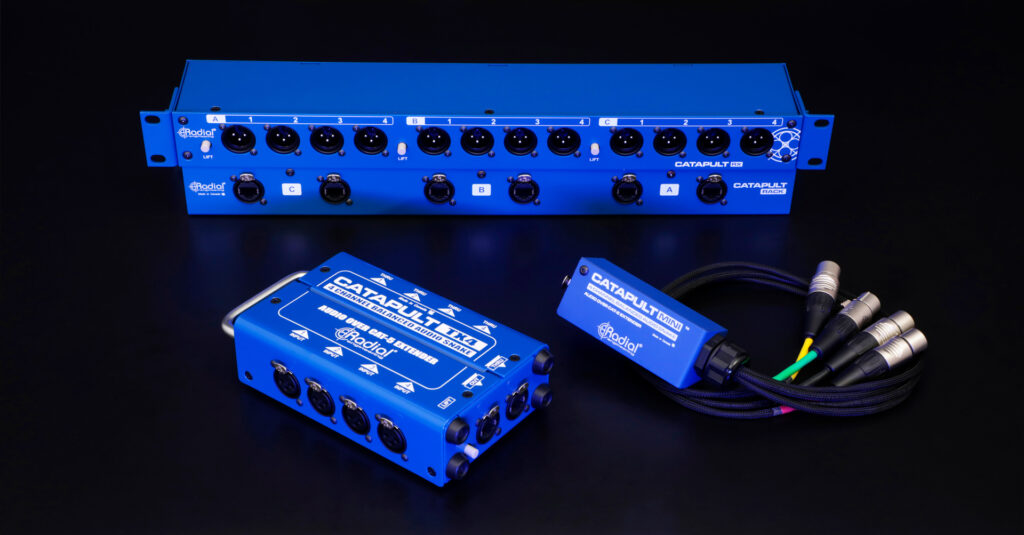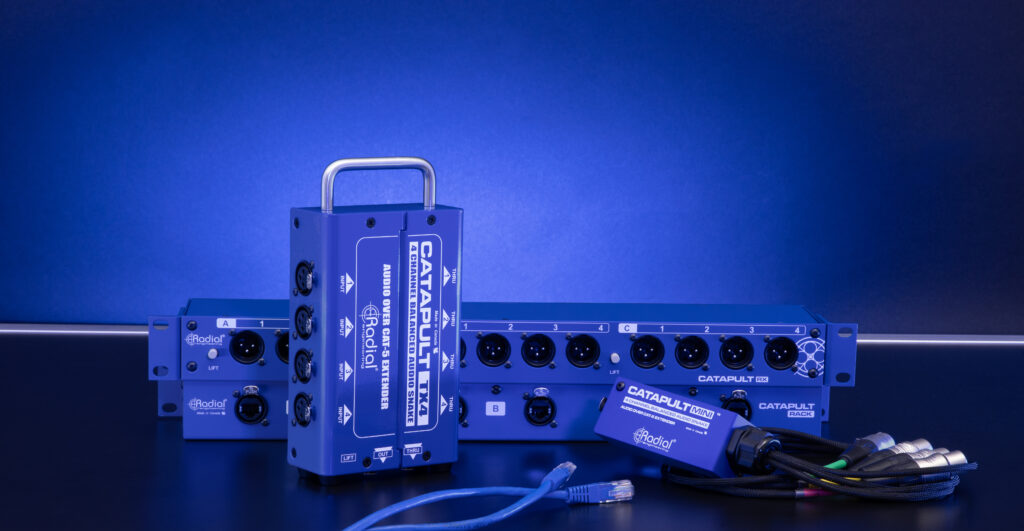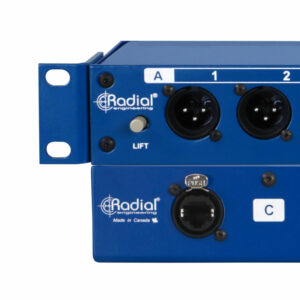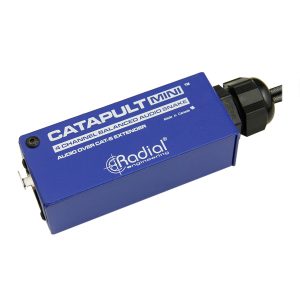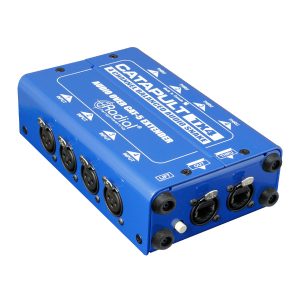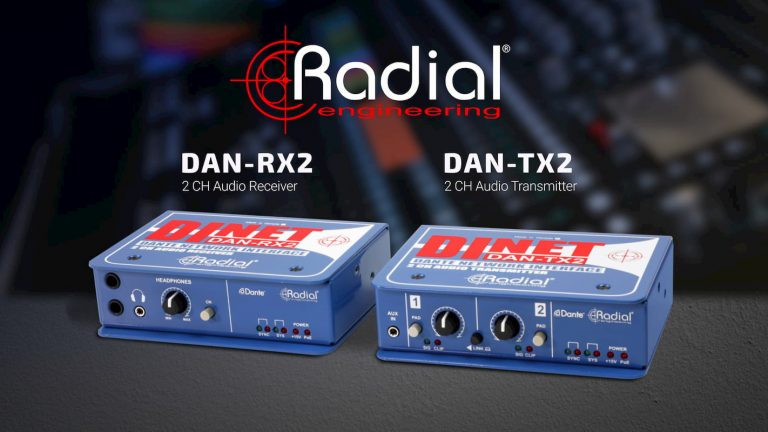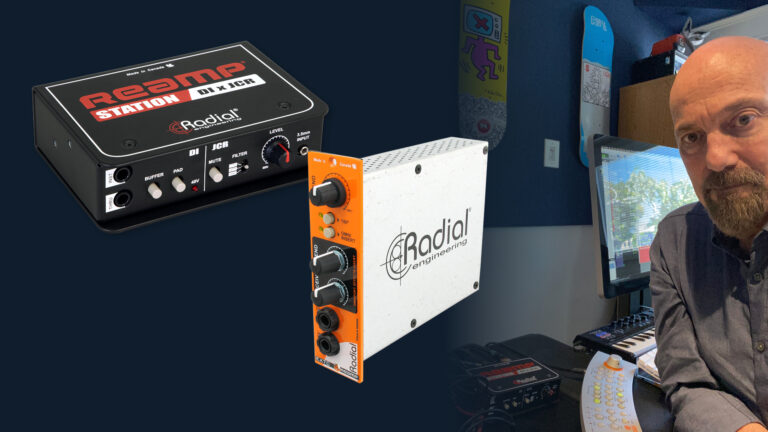Routing high quality audio between distant rooms or locations within Houses or Worship, businesses, or educational facilities is a critical requirement for both integrators and the people who utilize these spaces daily. However, digital audio networks can be as confusing as they are costly, and traditional analog audio snake cables are bulky, expensive, and impossible to reconfigure on the fly to keep up with changing customer needs.
The Radial Catapult system combines the best of both worlds, using a modular approach that allows you to create a customized analog audio snake over Cat 5 Ethernet cable. It’s easy to deploy in any venue: simply place one Catapult module at your audio source and another the intended destination and you can begin sending signals between the two instantly. Because the Catapults connect to each other using Cat 5 cabling, you can take advantage of a building’s existing infrastructure and link together distant rooms without pulling a single cable through the wall. Even in situations where new cable runs are required, Cat 5 is economical, light weight, and low-profile. Radial already has eleven Catapult modules in this growing product line, and they can all be mixed and matched to suit an endless number of customer applications.
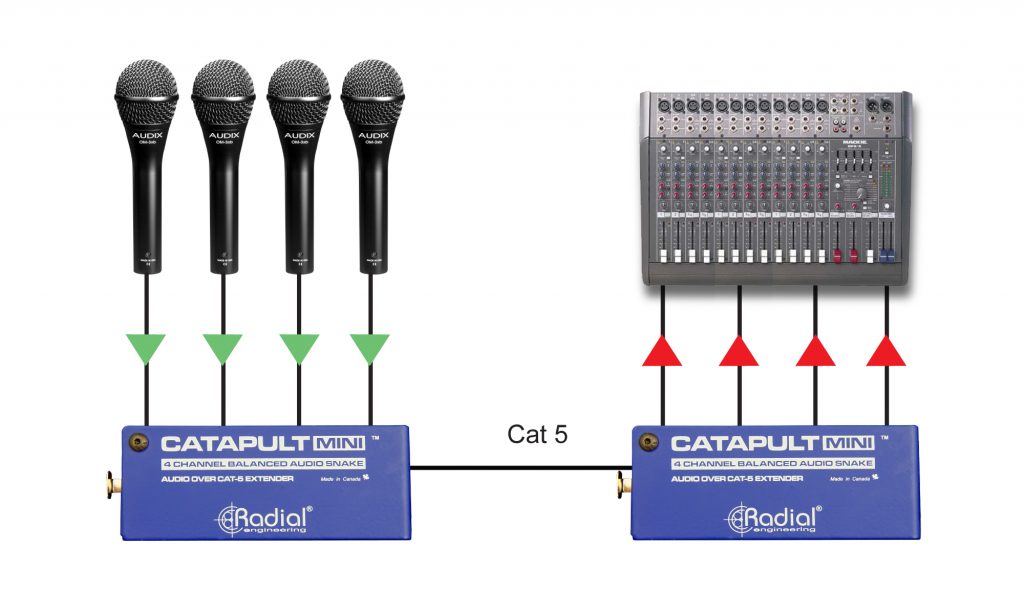
How it Works
The Catapult system is unique because it operates using standard Cat 5 Ethernet cables, which can already be found wired into nearly every room of existing businesses and venues. While these cables are commonly used to transmit digital data streams to networked devices, Radial Catapults make use of the four twisted pairs of conductors found within the Cat 5 cable to send four channels of balanced analog audio over long distances. This is the same method used within a standard multi-channel audio snake cable, but in a lower-profile format that is much more cost effective for larger installations.
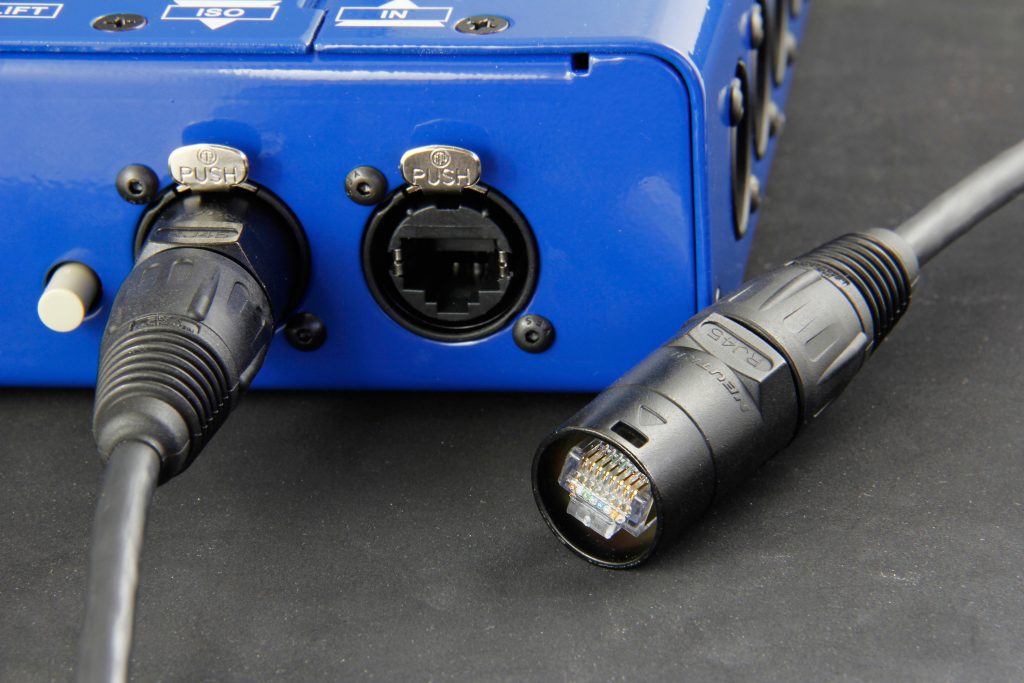
Since the Catapults use analog signals only, there is no digital conversion necessary and no power source is required for any of the modules to operate. Cat 5 cables are also easy to terminate on a job site so you can create cables of any length as needed – no soldering iron required! Cat 5, Cat 5e, Cat 6 cables all work with the Catapult system, and it is recommended to use shielded cables with shielded and terminated connectors to ensure the best noise rejection and to allow 48V phantom power to pass through to connected devices.
The Catapult Rack TX and RX
A Catapult Rack is essentially three Catapult units in one, built to fit a standard 1RU rack space. This makes them easy to incorporate into a venue’s existing rack setup. The units’ reversible rack ears mean you can set either the XLR or RJ45 side of the units to face the front – whichever best suits the particular setup. Transmit and Receive versions are available and both are built with robust steel enclosures and locking Neutrik etherCON connectors – so they’ll stand up to the toughest pro touring environments.

The Catapult Minis
The Catapult Minis are the most compact modules in the product line, and they are the simplest to use. Each consists of a small yet sturdy metal chassis with an RJ45 input for the Cat 5 cable connection. This input is also compatible with the Neutrik etherCON RJ45 connector, which is a durable metal shell that protects the RJ45 connector and locks to the Catapult Mini to prevent accidental disconnection. A short cable fan-out leads to four XLR or 1/4″ TRS connectors, depending on the module selected. The Mini TX includes four female XLRs, the Mini RX has male XLRs, and the Mini TRS features 1/4″ TRS jacks.
With one Catapult Mini connected to each end of a Cat 5 cable, you have a straightforward four channel analog audio snake, with inputs and outputs that can be connected directly to audio interfaces, mixers, or powered speakers. All of the channels on the Catapult modules are bidirectional, meaning they can be used to send signals in either direction between the two locations. This allows you to use the first two channels of audio to send signal to a remote location, while using the remaining two channels to receive a stereo signal in return along the same cable.
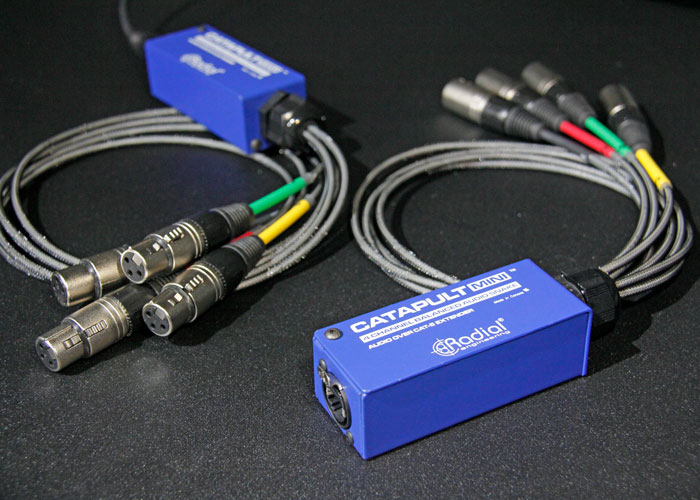
The Catapult TX4 and RX4
The TX4 and the RX4 are the slightly larger models of the Catapult system, and they are suitable for a wide variety of common customer applications. Both units include two sets of connectors within a rugged 14 gauge steel chassis, along with a large carrying handle for portability. The TX4 is designed to be placed at the audio source, and it features four XLR female inputs wired in parallel with four XLR male ‘thru’ connectors. This allows you to connect four microphones to the inputs and use the thru connectors to feed a local mixer, while also employing the Cat 5 connection to feed all four signals to a second location. The RX4 has four male XLR outputs along with four male XLR thru connectors, so you can split the audio signals between two devices at the destination end of the Cat 5 cable. Each of these modules feature two RJ45 connections: one main connection and a thru output wired in parallel for linking with additional Catapult modules. These RJ45 connections are also compatible with the etherCON locking connector type.
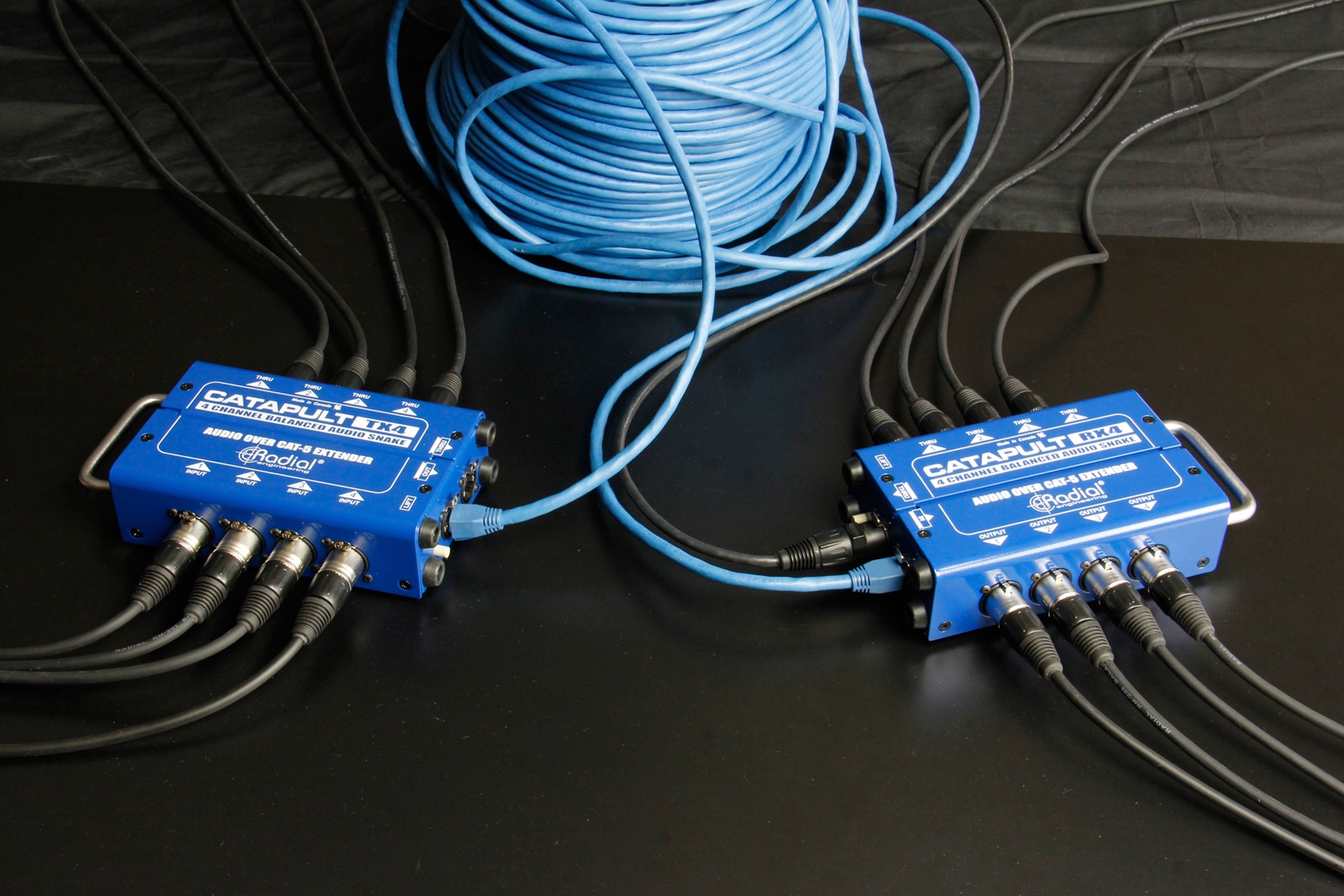
Transformer isolated modules
The Catapult TX4 and RX4 also have alternative modules that include high quality isolation transformers inside to help eliminate hum and buzz when splitting signals at either the audio source or destination. The TX4L and RX4L include transformers that are designed for use with line-level audio signals, while the TX4M and RX4M have transformers optimized for mic-level signals. Most of the time a shared ground lift on the base TX4 and RX4 modules will help remove ground loop noise when it is encountered, but the transformer equipped modules will provide extra protection that will help ensure a noise-free system and save valuable troubleshooting time on site.
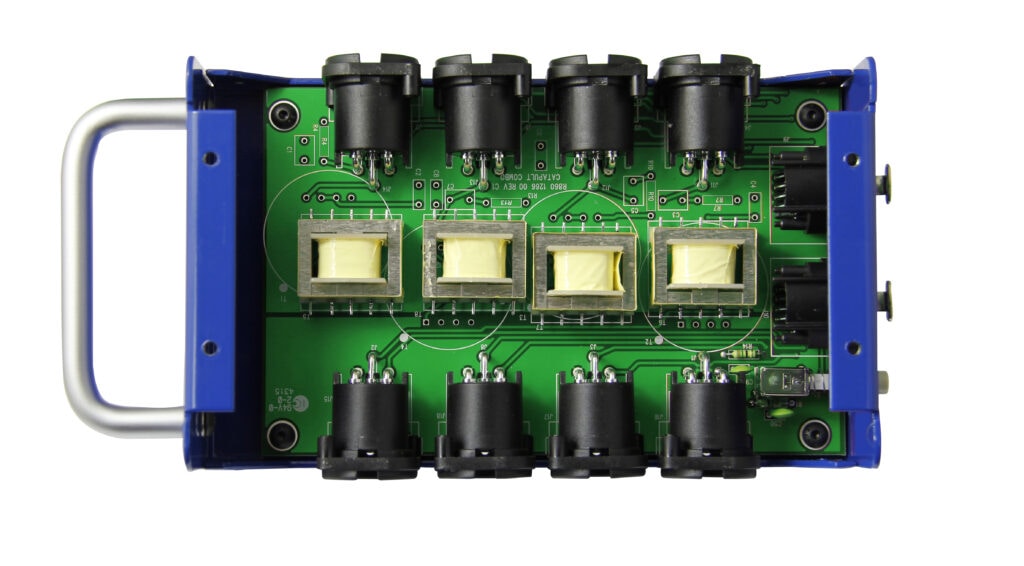
Endless possibilities
The wide range of Catapult modules available provides the ability to create a customized solution for just about any application. You can use the TX4M to split four microphone outputs to a local mixer, with a Mini RX at a remote location that can plug directly into the input channels of a recording device or interface.
Two TX4 modules can also be used as a complete set; since they have both male and female XLRs you can use them to send or receive each of the four audio channels as needed without having to reach for adaptor cables or swap module positions.
Often times an audio source needs to feed a rack of power amps in a distant location; in this instance you can use the Mini TRS at the audio source to plug directly into your playback device, and place an RX4L at the power amps so you can block stray DC voltages while also splitting the signal to another device such as a recording interface.
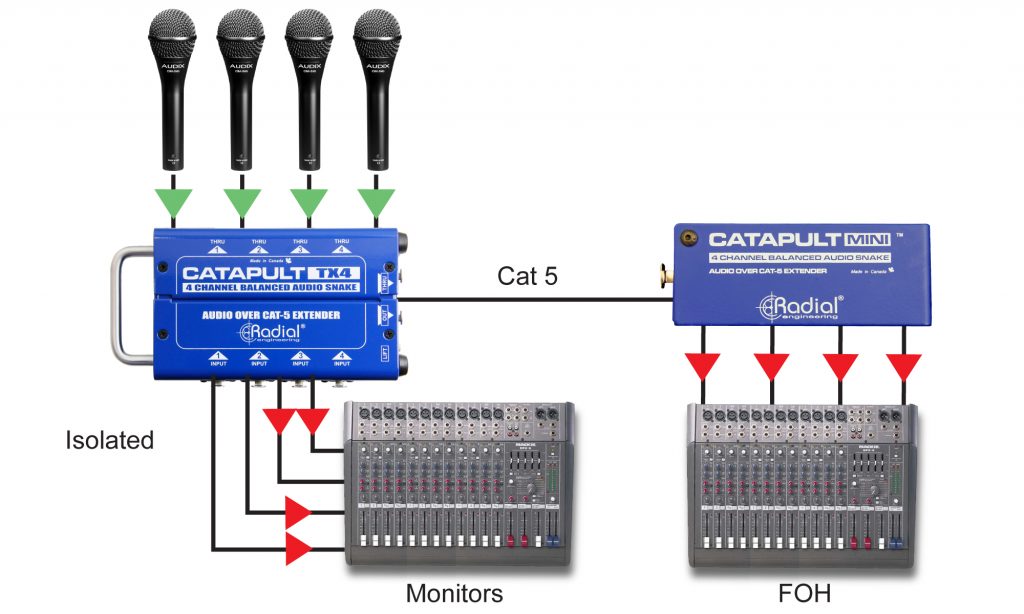
Adding in the Catapult Rack units makes it easy to expand your channel count while still achieving each of the setups described above. This allows you to have three Catapult Mini modules on stage that all feed one Catapult Rack RX connected to your FOH console, or you can use a Catapult Rack TX to feed line level signals to three separate locations throughout a venue.
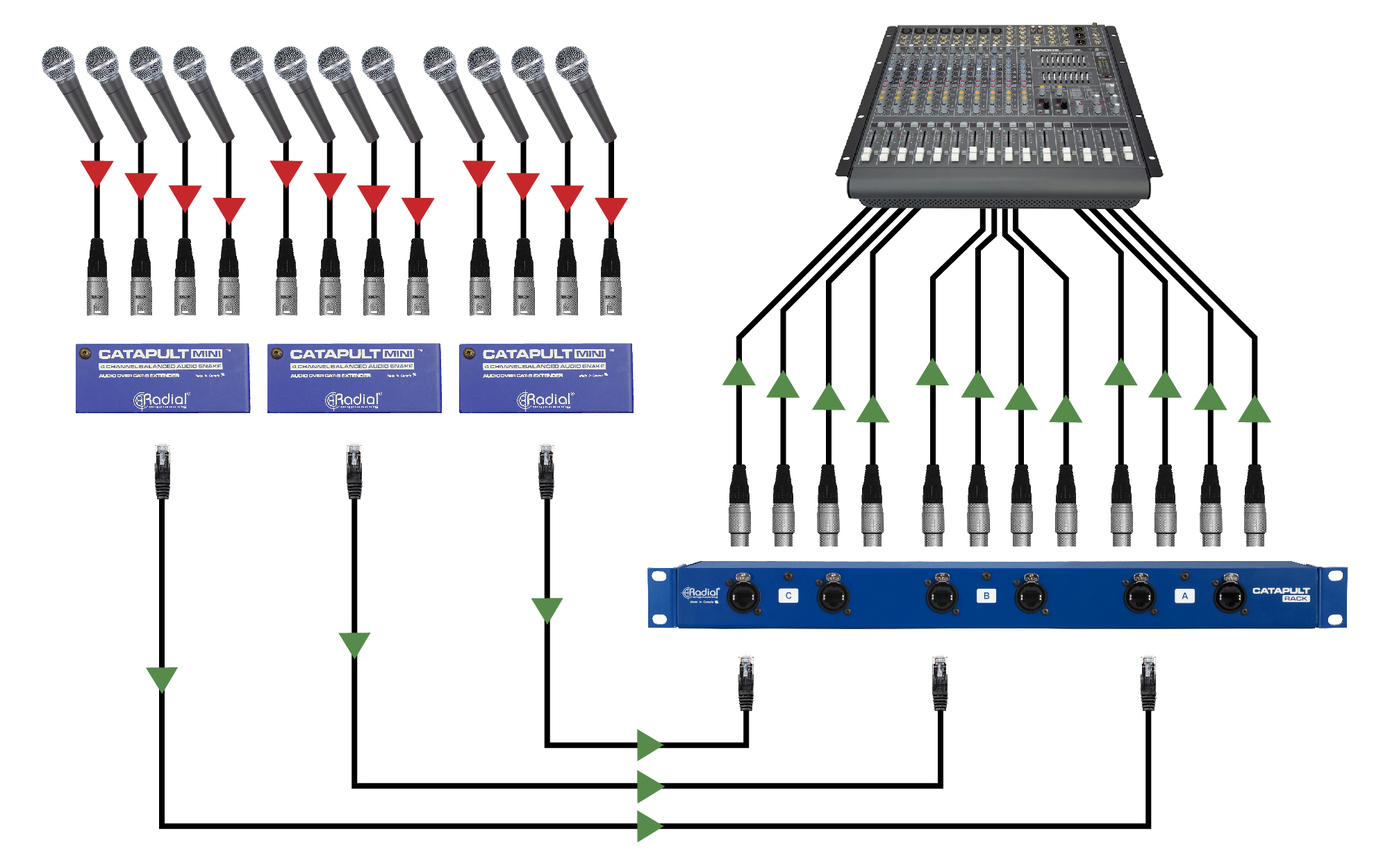
Overview / Conclusion
Thanks to the Radial Catapult system, connecting analog audio signals throughout a building has never been easier. When you use Cat 5 to distribute analog audio, you can deliver signals over long distances between distant rooms or across a live stage with ease, often using cable infrastructure that is already in place. The variety of Catapult modules available makes it easy to create a customizable solution for nearly any customer requirement, which can be reconfigured in an instant simply by swapping out one module for another. This makes the Radial Catapults an excellent choice for any installation where routing audio is a critical component.
